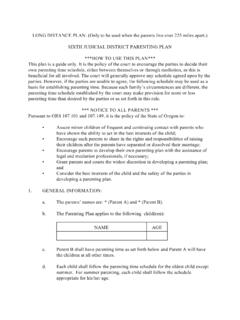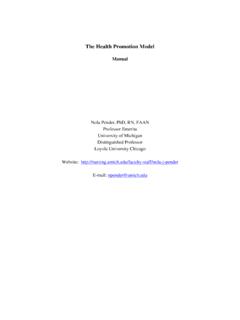Transcription of Healthy Lives Healthy People Tobacco Control Plan
1 Healthy Lives , Healthy People : A Tobacco Control plan for England DH INFORMATION READER BOX Policy Estates HR/Workforce Commissioning Management IM & T Planning Finance Clinical Social Care/Partnership Working Document purpose Policy Gateway reference 15513 Title Healthy Lives , Healthy People : A Tobacco Control plan for England Author DH Publication date 9 March 2011 Target audience PCT CEs, NHS Trust CEs, SHA CEs, Care Trust CEs, Foundation Trust CEs, Medical Directors, Directors of PH, Directors of Nursing, Local Authority CEs, Directors of Adult SSs, PCT Chairs, NHS Trust Board Chairs, Directors of Finance, Allied Health Professionals, GPs, Communications Leads, Directors of Children s SSs Circulation list PCT CEs, NHS Trust CEs, SHA CEs, Care Trust CEs, Foundation Trust CEs, Medical Directors, Directors of PH, Directors of Nursing, Local Authority CEs.
2 Directors of Adult SSs, PCT Chairs, NHS Trust Board Chairs, Directors of Finance, Allied Health Professionals, GPs, Directors of Children s SSs, Voluntary Organisations/NDPBs Description Following the 2010 Public Health White Paper Healthy Lives , Healthy People : Our Strategy for Public Health in England, the Tobacco Control plan sets out what the Government will do to support efforts to reduce Tobacco use over the next five years, within the context of the new public health system. Cross-reference Healthy Lives , Healthy People : Our Strategy for Public Health in England Superseded docs Action required N/A Timing N/A Contact details Tobacco Programme 7th Floor Wellington House 133-155 Waterloo Road London SE1 8UG For recipient s use ConTEnTS 3 Foreword 4 Executive summary 5 1.
3 A radical new approach for public health 8 2. Tobacco and health in England 15 3. Stopping the promotion of Tobacco 21 4. Making Tobacco less affordable 24 5. Effective regulation of Tobacco products 28 6. Helping Tobacco users to quit 32 7. Reducing exposure to secondhand smoke 37 8. Effective communications for Tobacco Control 41 9. Information and intelligence 44 10. Protecting Tobacco Control from vested interests 47 Appendix: Resources for comprehensive Tobacco Control 48 References 54 FoREWoRd The Public Health White Paper Healthy Lives , Healthy People : Our strategy for public health in England sets out the Government s long-term vision for improving public health in England.
4 The White Paper recognises the devastating impact that Tobacco use has on public health in our communities and it sets out a commitment to publish this Tobacco Control plan in order to maximise our efforts to reduce Tobacco use. Smoking is harmful not only to smokers but also to the People around them. Smoking rates have fallen considerably since the 1960s but over 8 million People in England still smoke. The decline in smoking rates in England has lost momentum in recent years. The plan builds on the achievements in Tobacco Control policy made over many decades and sets out a comprehensive package of evidence-based action that will be implemented at national level to support local areas in driving down rates of Tobacco use.
5 We also set out how we will continue our work to reshape social norms around Tobacco use to promote health and wellbeing. The plan includes national ambitions to reduce smoking prevalence among adults and young People , and to reduce smoking during pregnancy. Smoking rates are much higher in some social groups, including those with the lowest incomes. These groups suffer the highest burden of smoking-related illness and death. Smoking is the single biggest cause of inequalities in death rates between the richest and poorest in our communities. Consequently, tackling Tobacco use is central to realising the Government s commitment to improve the health of the poorest, fastest.
6 This Tobacco Control plan sets out what the Government will do to support efforts to reduce Tobacco use over the next five years, within the context of the new public health system. It aims to promote comprehensive and evidence-based Tobacco Control in local communities. The plan is built around the six strands of comprehensive Tobacco Control that are recognised internationally. The Government recognises that Tobacco Control forms a crucial component of our efforts to improve public health, and everyone has a role to play. My ambition is for national and local government to work in close collaboration with civil society, with public and private sector organisations and with communities to implement effective Tobacco Control and reduce the prevalence of smoking.
7 4 Andrew Lansley CBE Secretary of State for Health ExECuTIvE SuMMARy Tobacco use remains one of our most significant public health challenges. While rates of smoking have continued to decline over the past decades, around 21 per cent of adults in England still smoke. Smoking prevalence has fallen little since 2007 and we need to take new action to drive smoking rates down further. Smoking is the primary cause of preventable morbidity and premature death, accounting for 81,400 deaths in England in 2009. In England, deaths from smoking are more numerous than the next six most common causes of preventable death combined ( drug use, road accidents, other accidents and falls, preventable diabetes, suicide and alcohol abuse).
8 Smoking rates are much higher in some social groups, including those with the lowest incomes. These groups suffer the highest burden of smoking-related illness and death. Smoking is the single biggest cause of inequalities in death rates between the richest and poorest in our communities. Consequently, tackling Tobacco use is central to realising the Government s commitment to improve the health of the poorest, fastest. Treating smoking-related illnesses was estimated to have cost the nHS billion in 2006/07, or over 50 million every week. In 2008/09, some 463,000 hospital admissions in England among adults aged 35 and over were attributable to smoking, or some 5 per cent of all hospital admissions for this age group.
9 Clearly, the costs of Tobacco use are much greater than just costs to the nHS, and the overall economic burden of Tobacco use to society is estimated at billion a year. The Government is committed to improving public health in communities across England. The proposals set out in the White Paper Healthy Lives , Healthy People show that this is a new era for public health. It will have higher priority and dedicated resources. A radical new approach for delivering public health will empower local communities and provide professionals with greater freedom to focus on the needs of local populations.
10 This Tobacco Control plan shows how Tobacco Control will be delivered in the context of this new public health system, focusing in particular on the action that the Government will take nationally to drive down the prevalence of smoking and to support comprehensive Tobacco Control in local areas. There is clear evidence that the most effective Tobacco Control strategies involve taking a multi-faceted and comprehensive approach at both national and local level. We recognise that while nicotine keeps Tobacco users physically dependent, there are a wide range of social and behavioural factors that encourage young People to take up smoking and that make it harder for Tobacco users to quit.













![Important Notice from [Insert Name of Entity] About Your ...](/cache/preview/2/4/a/f/b/6/3/c/thumb-24afb63ca28b6e04ac534dd972d886e1.jpg)

